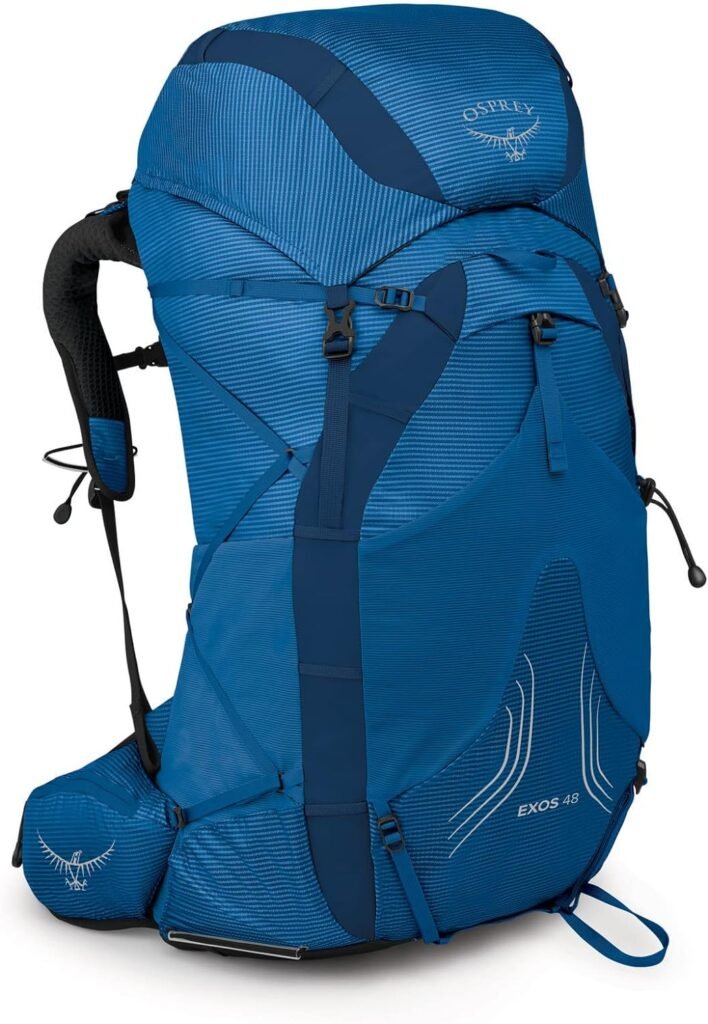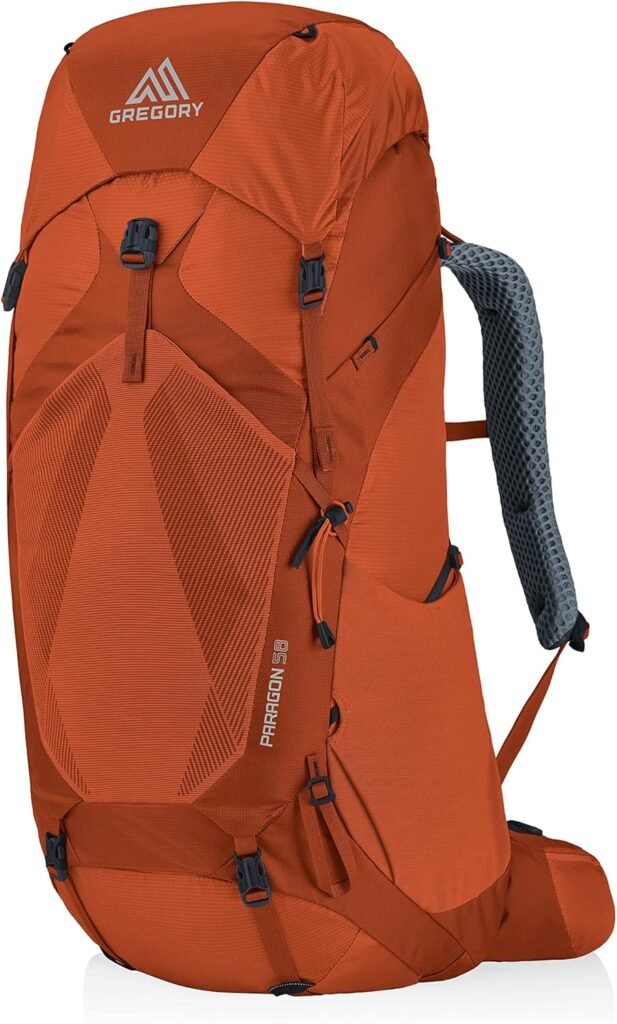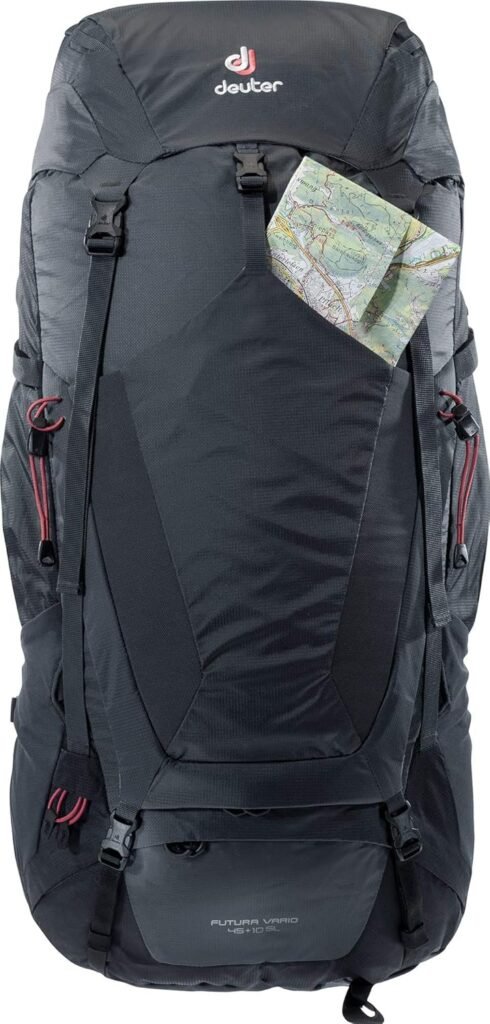Lightweight hiking gear is essential for outdoor enthusiasts seeking to enhance their trekking experience without the burden of heavy equipment. As more hikers prioritize comfort and efficiency, the focus has shifted towards smart packing strategies that allow for a streamlined load while still ensuring all necessary items are included.
This guide explores the principles of lightweight hiking gear, offering insights on selecting versatile, high-quality equipment and packing techniques that maximize space and minimize weight.
Essential Lightweight Hiking Gear for Beginners
When embarking on your first hiking adventure, the right gear can make all the difference between a delightful experience and a grueling one. For beginners, understanding the essentials of lightweight hiking gear is crucial, as it allows you to pack smartly without sacrificing comfort. The key is to focus on items that are both functional and easy to carry, ensuring that you can enjoy the beauty of nature without being weighed down by unnecessary equipment.
First and foremost, a good backpack is essential. Look for one that is lightweight yet spacious enough to hold your gear. A daypack with a capacity of 20 to 30 liters is typically sufficient for short hikes. It should have padded shoulder straps and a hip belt to distribute weight evenly, which will help you stay comfortable on the trail. Additionally, consider a pack with multiple compartments to keep your gear organized and easily accessible.
Next, let’s talk about clothing. The right attire can significantly enhance your hiking experience. Opt for moisture-wicking fabrics that keep you dry and comfortable, as cotton tends to retain moisture and can lead to discomfort. Layering is also a smart strategy; start with a lightweight base layer, add an insulating mid-layer, and finish with a breathable, waterproof outer layer. This way, you can easily adjust your clothing based on changing weather conditions. Don’t forget to wear a good pair of hiking socks, as they can prevent blisters and provide extra cushioning.
Footwear is another critical component of your hiking gear. A pair of lightweight, supportive hiking shoes or boots can make a world of difference. Look for shoes that offer good traction and are designed for the terrain you’ll be navigating. If you’re hiking on well-maintained trails, trail runners may suffice, but for more rugged paths, consider investing in a pair of lightweight hiking boots that provide ankle support.
As you prepare for your hike, hydration should be a top priority. A lightweight hydration system, such as a water bladder or a reusable water bottle, is essential for staying hydrated on the trail. Many backpacks come with a compartment for a hydration reservoir, making it easy to sip water without stopping. If you’re hiking in a remote area, consider bringing a portable water filter or purification tablets to ensure you have access to clean drinking water.
In addition to hydration, packing some lightweight snacks is a smart move. Energy bars, trail mix, or dried fruit are excellent options that provide the necessary fuel to keep you energized throughout your hike. These snacks are not only lightweight but also easy to pack and consume on the go.
Finally, don’t overlook the importance of navigation tools. A lightweight map and compass or a GPS device can help you stay on track, especially if you’re venturing into unfamiliar territory. While smartphones can serve as navigation aids, it’s wise to have a backup in case of battery failure or poor reception.
In conclusion, packing smartly for your first hiking trip doesn’t have to be overwhelming. By focusing on lightweight essentials like a good backpack, appropriate clothing, supportive footwear, hydration systems, nutritious snacks, and navigation tools, you can ensure a comfortable and enjoyable experience on the trail. With the right gear in hand, you’ll be well-prepared to embrace the great outdoors and create lasting memories on your hiking journey.
Top 3 Lightweight Backpacks for Comfort and Durability
When it comes to lightweight hiking gear, choosing the right backpack can make all the difference in your outdoor experience. A well-designed backpack not only enhances comfort but also ensures durability, allowing you to focus on the beauty of nature rather than the strain on your back. With so many options available, it can be overwhelming to find the perfect fit. However, we’ve narrowed it down to five top lightweight backpacks that excel in both comfort and durability, making them ideal companions for your next adventure.
1. Osprey Exos 48

First on the list is the Osprey Exos 48. This backpack is a favorite among minimalist hikers due to its impressive balance of weight and functionality. Weighing in at just under three pounds, it features a ventilated back panel that promotes airflow, keeping you cool during those strenuous climbs. The Exos 48 also boasts a unique tensioned mesh back system that conforms to your body, providing support without adding unnecessary bulk. With ample storage options, including side pockets and a removable lid, this backpack allows you to pack smartly while maintaining easy access to your essentials.
2. Gregory Paragon 58

Next, we have the Gregory Paragon 58, which is perfect for those who need a bit more capacity without sacrificing comfort. This backpack is designed with an adjustable torso length, ensuring a customized fit for various body types. The Paragon 58 features a breathable back panel and padded shoulder straps that distribute weight evenly, reducing fatigue on long hikes. Additionally, its durable materials are built to withstand the rigors of the trail, making it a reliable choice for both weekend warriors and seasoned trekkers alike. With its thoughtful organization and easy-to-reach pockets, you can stay organized and comfortable throughout your journey.
3. Deuter Futura Vario 45+10

Moving on, the Deuter Futura Vario stands out for its innovative design that prioritizes comfort. This backpack features a unique Aircomfort Sensic Vario back system, which reduces sweating and increases ventilation, making it ideal for warm-weather hikes. The adjustable back length and padded shoulder straps ensure a snug fit, while the durable materials provide peace of mind on rugged terrain. With its expandable capacity, the Futura Vario allows you to pack extra gear for longer trips without feeling weighed down.
Choosing the Right Lightweight Tent for Your Hiking Adventure
When it comes to planning a hiking adventure, one of the most crucial decisions you’ll make is selecting the right lightweight tent. A good tent can significantly enhance your outdoor experience, providing shelter from the elements while ensuring you don’t feel weighed down by your gear. To start, it’s essential to consider the type of hiking you’ll be doing. Are you embarking on a multi-day trek through rugged terrain, or are you planning a leisurely weekend getaway? The answer to this question will guide your choice of tent.
First and foremost, weight is a primary factor. Lightweight tents are designed to minimize bulk without compromising on durability. Look for materials like ripstop nylon or polyester, which offer a good balance between weight and strength. Many modern tents also feature aluminum poles, which are both lightweight and sturdy, making them an excellent choice for hikers who need to pack efficiently. As you browse through options, pay attention to the tent’s packed size as well. A tent that compresses down to a small size will fit more easily in your backpack, leaving room for other essentials.
Next, consider the capacity of the tent. While it might be tempting to opt for a two-person tent for solo trips to save weight, think about your comfort. A tent that feels cramped can lead to a restless night, especially after a long day on the trail. If you’re hiking with a partner or planning to share your space with gear, a three-person tent might be a better option, providing extra room for movement and storage. Additionally, some tents come with vestibules, which are great for storing backpacks and muddy shoes outside the sleeping area, keeping your space clean and organized.
Ventilation is another critical aspect to keep in mind. A well-ventilated tent can help prevent condensation buildup, which can be a real issue in humid conditions. Look for tents that feature mesh panels or multiple openings, allowing for airflow while still keeping insects at bay. This is particularly important if you plan to camp in warmer climates or during the summer months. A tent that breathes well will not only keep you comfortable but also help maintain a pleasant atmosphere inside.
Furthermore, consider the ease of setup. After a long day of hiking, the last thing you want is to struggle with complicated tent poles and confusing instructions. Many lightweight tents are designed for quick and easy assembly, often featuring color-coded poles or pop-up designs. This can save you valuable time and energy, allowing you to relax and enjoy your surroundings sooner.
Lastly, don’t forget to check the weather conditions for your hiking destination. If you anticipate rain or wind, look for a tent with a good waterproof rating and sturdy construction. Some tents come with additional features like rainflys or footprint options that can enhance their weather resistance.
The Best Lightweight Sleeping Bags for All Seasons
When it comes to lightweight hiking gear, one of the most crucial items to consider is your sleeping bag. A good sleeping bag can make or break your outdoor experience, especially when you’re trying to pack smart without sacrificing comfort. Fortunately, there are several excellent options available that cater to all seasons, ensuring you stay warm and cozy no matter the weather conditions.
First and foremost, it’s essential to understand the different types of sleeping bags available.
Year-round versatility
For year-round versatility, a three-season sleeping bag is often the best choice. These bags are designed to keep you comfortable in temperatures ranging from about 20°F to 32°F, making them suitable for spring, summer, and fall adventures. Look for models that use high-quality down insulation, as down is not only lightweight but also provides exceptional warmth-to-weight ratio. Brands like REI and Marmot offer fantastic options that pack down small, allowing you to save space in your backpack.
For the cold
If you’re planning to hike in colder conditions, you might want to consider a winter sleeping bag. These bags are typically rated for temperatures below 20°F and often feature additional insulation and draft collars to keep the warmth in. While they may be bulkier than three-season bags, many manufacturers have made strides in creating lightweight winter options that still provide the necessary warmth. For instance, the Western Mountaineering Alpinlite is a favorite among serious backpackers for its impressive warmth and lightweight design.
For the Heat
On the other hand, if you’re embarking on a summer hike, a lightweight sleeping bag designed specifically for warmer weather can enhance your comfort. Summer bags are usually rated for temperatures above 32°F and are often made with lighter materials, which helps to keep you cool during those hot nights. Look for options with synthetic insulation, as they tend to wick moisture better and dry faster, making them ideal for humid conditions. The Sea to Summit Spark is a popular choice, known for its ultralight design and packability.
Moreover, it’s worth considering the shape of your sleeping bag. Mummy bags are designed to hug your body closely, which helps to retain heat, making them a great option for colder weather. However, if you prefer a bit more room to move around, a rectangular bag might be more suitable. Some brands even offer hybrid designs that combine the best of both worlds, providing a snug fit while still allowing for some extra space.
When packing your sleeping bag, don’t forget about the importance of a good sleeping pad. A lightweight, insulated sleeping pad can significantly enhance your comfort by providing cushioning and insulation from the cold ground. Many hikers opt for inflatable pads, which pack down small and are easy to carry. Brands like Therm-a-Rest and Big Agnes offer excellent options that balance weight, comfort, and durability.
In conclusion, choosing the right lightweight sleeping bag is essential for a comfortable hiking experience, regardless of the season. By considering factors such as insulation type, temperature rating, and bag shape, you can find the perfect sleeping bag that meets your needs. Coupled with a quality sleeping pad, you’ll be well on your way to enjoying restful nights under the stars, all while keeping your pack light and manageable. So, as you prepare for your next adventure, remember that smart packing doesn’t have to mean sacrificing comfort; it’s all about making informed choices that suit your hiking style.
Lightweight Cooking Gear: Preparing Meals on the Trail
When it comes to lightweight hiking gear, one of the most crucial aspects to consider is your cooking equipment. Preparing meals on the trail can be a delightful experience, but it often requires a careful balance between functionality and weight. Fortunately, with the right lightweight cooking gear, you can enjoy delicious meals without feeling bogged down by heavy equipment.
First and foremost, let’s talk about stoves. Traditional camp stoves can be bulky and cumbersome, but there are many compact options available that are perfect for backpacking. Canister stoves, for instance, are incredibly popular among hikers due to their lightweight design and ease of use. They typically consist of a small burner that screws onto a fuel canister, allowing you to boil water or cook meals quickly. Many of these stoves are foldable and can fit easily into your cooking pot, saving space in your pack. Additionally, some models come with built-in igniters, eliminating the need for matches or lighters, which can be a game-changer when you’re trying to set up camp after a long day on the trail.
Next, let’s consider cookware. When selecting pots and pans, look for options made from lightweight materials like titanium or aluminum. These materials not only reduce weight but also heat up quickly, making your cooking process more efficient. A good rule of thumb is to choose a pot that is large enough to prepare meals for your group but not so large that it adds unnecessary weight. Many hikers opt for a pot that doubles as a bowl, which can further streamline your gear. Additionally, collapsible or nesting cookware can save space in your pack, allowing you to maximize your packing efficiency.
Now, while cooking gear is essential, don’t overlook the importance of utensils. Lightweight sporks or multi-tools can serve multiple purposes, allowing you to eat, stir, and serve without carrying a full set of cutlery. Some hikers even use biodegradable utensils to minimize their environmental impact, which is a thoughtful consideration when enjoying nature. Furthermore, consider bringing a small, portable cutting board for meal prep. Many options are designed to be ultra-thin and lightweight, making them easy to pack without taking up much space.
When it comes to food, planning is key. Dehydrated meals are a popular choice among backpackers because they are lightweight and require minimal cooking. Simply add hot water, and you have a warm meal ready to enjoy. However, if you prefer fresh ingredients, consider packing lightweight options like instant rice, pasta, or couscous, which cook quickly and can be paired with a variety of sauces or seasonings. Don’t forget to bring along some snacks, as they can provide much-needed energy during long hikes. Trail mix, energy bars, and dried fruits are excellent choices that are both lightweight and nutritious.
Finally, remember to pack your cooking gear in a way that makes it easily accessible. Organizing your gear in a way that allows you to quickly set up and pack down can make a significant difference in your overall experience. Using stuff sacks or mesh bags can help keep everything organized and prevent items from getting lost in your pack.
In conclusion, lightweight cooking gear is essential for enjoying meals on the trail without sacrificing comfort. By choosing compact stoves, lightweight cookware, and planning your meals wisely, you can create a satisfying culinary experience that enhances your hiking adventure. With a little thought and preparation, you can savor delicious meals while keeping your pack light and manageable.
Packing Tips for Lightweight Hiking: Maximizing Space and Weight
When it comes to lightweight hiking, packing smart is essential for maximizing both space and weight without sacrificing comfort. The first step in this process is to carefully evaluate your gear. Start by making a list of everything you think you might need, but then challenge yourself to eliminate items that are not absolutely necessary. This is where the concept of “the essentials” comes into play. Focus on multi-functional gear that can serve more than one purpose. For instance, a lightweight jacket that can double as a pillow or a cooking pot that can also be used for eating can significantly reduce the number of items you need to carry.
Next, consider the materials of your gear. Opt for lightweight, durable fabrics that are designed for outdoor use. Modern advancements in technology have led to the creation of materials that are not only lighter but also more efficient in terms of insulation and waterproofing. For example, synthetic sleeping bags and down jackets provide excellent warmth without the bulk, allowing you to pack them down to a fraction of their size. Similarly, choosing a tent made from lightweight materials can save you precious ounces while still providing the shelter you need.
As you begin to pack, think about how you can maximize the space in your backpack. Rolling your clothes instead of folding them can create more room and reduce wrinkles. Additionally, using compression sacks for your sleeping bag and clothing can help you squeeze out every bit of air, making it easier to fit everything into your pack. Don’t forget to utilize every nook and cranny of your backpack; stashing small items like snacks or a first-aid kit in side pockets or the top lid can help keep your main compartment organized and accessible.
Another important aspect of packing smart is to distribute weight evenly throughout your pack. Place heavier items, such as your water supply and cooking gear, closer to your back and near the center of your pack. This positioning helps maintain balance and stability while you hike, reducing strain on your back and shoulders. Lighter items, like clothing and sleeping gear, can be placed higher up or further away from your back, allowing for a more comfortable carry.
Moreover, consider the duration of your hike when deciding how much food and water to bring. For shorter trips, you can afford to pack lighter meals or even opt for dehydrated food that requires minimal preparation. If you’re hiking in an area with reliable water sources, you can carry less water and refill along the way. This not only lightens your load but also allows you to enjoy the scenery without the burden of excessive gear.
Finally, remember that comfort is key. While it’s important to pack light, you should never compromise on items that contribute to your overall comfort and safety. A well-fitted backpack, a quality pair of hiking shoes, and appropriate clothing for the weather are non-negotiable. By carefully selecting your gear and packing it efficiently, you can enjoy the great outdoors without feeling weighed down. Ultimately, lightweight hiking is about finding the right balance between minimalism and comfort, allowing you to fully immerse yourself in the beauty of nature while keeping your load manageable.
Must-Have Lightweight Clothing for Comfort on the Trail
When it comes to hitting the trails, the right clothing can make all the difference in your comfort and overall experience. Lightweight hiking gear is essential for those who want to enjoy the great outdoors without being weighed down by heavy fabrics. The key is to choose materials that are not only light but also breathable, moisture-wicking, and quick-drying. This way, you can stay comfortable regardless of the weather conditions you encounter.
First and foremost, a good base layer is crucial. Look for lightweight, moisture-wicking fabrics that will keep sweat away from your skin. Merino wool and synthetic blends are excellent choices because they regulate temperature well and dry quickly. A fitted long-sleeve shirt can provide sun protection while also keeping you warm during cooler mornings or evenings. As you transition into warmer weather, a short-sleeve option can be just as effective, allowing for breathability while still offering some coverage.
Next, consider your mid-layer. This is where you can add a bit of insulation without adding too much bulk. Lightweight fleece or a thin down jacket can provide warmth without weighing you down. The beauty of these materials is that they can easily be packed away when not in use, making them a versatile addition to your hiking wardrobe. If you anticipate varying temperatures throughout your hike, layering is your best friend. You can easily add or remove layers as needed, ensuring that you remain comfortable no matter the conditions.
Moving on to your outer layer, a lightweight, waterproof jacket is a must-have for any hiker. Look for options that are breathable yet provide adequate protection from rain and wind. Many modern jackets are designed with packability in mind, allowing you to stow them in your backpack without taking up too much space. This way, you can be prepared for unexpected weather changes without compromising on weight. Additionally, features like adjustable hoods and cuffs can enhance your comfort by keeping the elements at bay.
When it comes to bottoms, lightweight hiking pants or shorts are essential. Opt for quick-drying materials that offer flexibility and comfort. Many brands now offer pants that can convert into shorts, providing versatility for changing conditions. If you prefer shorts, consider those with built-in sun protection and moisture-wicking properties. This will help keep you cool and comfortable while also safeguarding your skin from harmful UV rays.
Footwear is another critical component of your hiking attire. Lightweight hiking shoes or boots that provide good support and traction are vital for navigating various terrains. Look for options with breathable mesh uppers to keep your feet cool and dry. Additionally, investing in moisture-wicking socks can help prevent blisters and keep your feet comfortable throughout your hike. Remember, the right footwear can make or break your hiking experience, so choose wisely.
Finally, don’t forget about accessories. A lightweight hat can shield your face from the sun, while a pair of sunglasses can protect your eyes from glare. A buff or neck gaiter can also serve multiple purposes, from keeping you warm to providing sun protection. By carefully selecting your clothing and accessories, you can create a lightweight, comfortable hiking outfit that allows you to fully enjoy your time on the trail. Ultimately, packing smart means prioritizing comfort without sacrificing the essentials, ensuring that your hiking adventures are both enjoyable and memorable.
The Bottom Line
In conclusion, lightweight hiking gear is essential for enhancing the outdoor experience by reducing fatigue and increasing mobility. By carefully selecting versatile, high-quality items and employing smart packing techniques, hikers can maintain comfort without the burden of excessive weight. Prioritizing essential gear, utilizing multi-functional items, and organizing efficiently allows for a well-balanced pack that supports both performance and enjoyment on the trail. Ultimately, the right approach to packing can lead to more enjoyable and successful hiking adventures.








